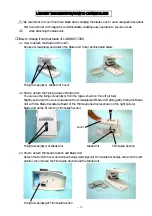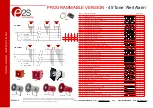
a weighted tape) and these points used as a reference throughout the duration
of the survey
Should Pitch/Roll angle be applied to the depth ?
Many surveyors assume that sonar is like a laser being shone through the water
and that the distance measured should be assumed is a hypotenuse
measurement to be trigonometrically corrected by any Pitch/Roll angle that has
been measured.
The best physical analogy of the echo sounder beam would be a torch light
beam that is shone over an area, within that area there is a small piece of mirror
that reflects the light at that point, sonar is very similar except that the reflected
point is normally the closest point within the beam.
What is a narrow beam transducer ?
The properties of a transducer are normally a function of its physical size/shape
and its resonant frequency. The beam pattern of a given transducer is normally
presented as a radial distribution pattern versus output power applied. This
generally means that the spread (beamwidth) of the transmitted ultrasound
increases with amplitude. Most modern echo sounders use a Digital Signal
Processing (DSP) technique to reduce the power/gain of its transmitted signal
and thus maintain the minimum beam width for a given transducer.
The advantage of a narrow beamwidth survey transducer is the ability to "see"
into narrow valley shapes thus gaining a more representative definition of the
bottom surface being surveyed. This is contrary to the navigation use of an echo
sounder which has a reasonably wide beamwidth where the returned signal
within the beam is the ''shoalest'' or shallowest point within the beam, obviously
of more interest for hull clearance requirements.
Is my Fishfinder OK for survey use ?
Modern Fishfinder type navigation echo sounders use quite sophisticated DSP
techniques to show the bottom surface, bottom type and fish in the water
column. As with the beamwidth discussion the electronics of a 'leisure' Fishfinder
are not designed for a survey application. In particular the depth values are





























